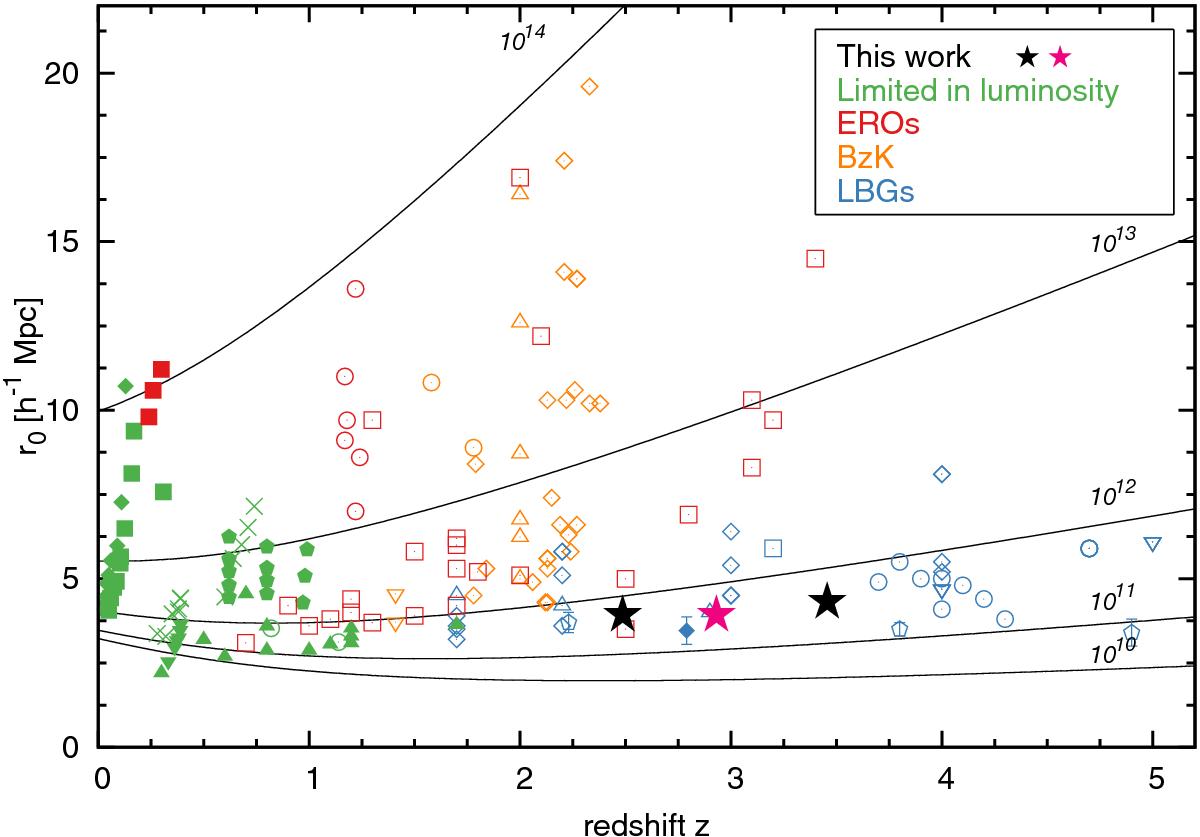Fig. 5

Correlation length r0 as a function of redshift from various surveys of different types of objects. Stars indicate measurements obtained from this work in three redshift ranges (magenta for a wide redshift range sample, and black for a low and high redshift samples). Different colours indicate different galaxy populations targeted by using various techniques, as indicated in the upper right corner. Open symbols indicate measurements based on photometric data, while filled symbols are for measurements from spectroscopic data. Blue: LBG galaxies (open squares – Foucaud et al. 2003; open circles – Ouchi et al. 2004; open triangles – Adelberger et al. 2005; open reversed triangles – Kashikawa et al. 2006; open diamonds – Savoy et al. 2011; filled diamonds – Bielby et al. 2013; open pentagon – Barone-Nugent et al. 2014). Orange: BzK galaxies (open circles – Blanc et al. 2008; open triangles – Hartley et al. 2010; open reversed triangle – McCracken et al. 2010; open diamonds – Lin et al. 2012). Green: galaxy samples from surveys limited in luminosity (filled squares – Norberg et al. 2002; open circles – Coil et al. 2006; filled triangles – Le Fèvre et al. 2005; filled reversed triangles – Pollo et al. 2006, filled diamonds – Zehavi et al. 2011; filled pentagons – Marulli et al. 2013; crosses – Skibba et al. 2009). Red: EROs or massive red galaxies (open squares – Daddi et al. 2003; filled squares – Zehavi et al. 2005a; open circles – Brown et al. 2008). The five solid curves show the correlation length of dark haloes with different minimum masses, as labelled.
Current usage metrics show cumulative count of Article Views (full-text article views including HTML views, PDF and ePub downloads, according to the available data) and Abstracts Views on Vision4Press platform.
Data correspond to usage on the plateform after 2015. The current usage metrics is available 48-96 hours after online publication and is updated daily on week days.
Initial download of the metrics may take a while.


